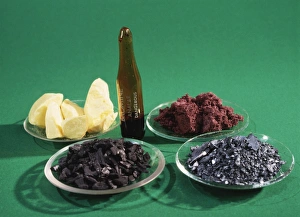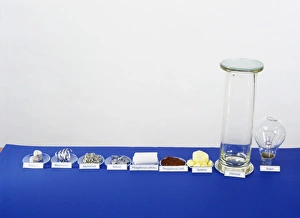Nonmetal Collection
"Unleashing the Power of Nonmetals
All Professionally Made to Order for Quick Shipping
"Unleashing the Power of Nonmetals: From Phosphorus to Selenium" From the vibrant atomic structure of Phosphorus (C018 / 3696) to the intriguing composition of Praseodymium, nonmetals hold a world of wonders. Among them, Selenium stands out with its unique properties and versatile applications. Carbon, an essential element in life itself, takes center stage once again alongside Graphite rods that conduct electricity like no other. Sulphur adds its distinctive touch to this captivating ensemble as it forms intricate compounds with various elements. The presence of Carbon is undeniable throughout this journey, reminding us of its omnipresence in our daily lives. And let's not forget about Phosphorus and Selenium; these nonmetals play crucial roles in everything from fertilizers to electronic devices. As we delve deeper into their atomic structures and characteristics, we uncover a realm where innovation thrives. Graphite rods emerge as powerful tools for conducting electricity efficiently while offering exceptional durability. In this symphony of elements, each nonmetal plays a vital role in shaping our world, and are the unsung heroes behind technological advancements and scientific breakthroughs alike. Their versatility allows them to be catalysts for progress across industries ranging from agriculture to electronics. So next time you encounter these remarkable substances - whether it's Sulphur's pungent scent or Carbon's ubiquitous presence - take a moment to appreciate their significance. These nonmetals silently contribute towards building a brighter future through their extraordinary properties and endless possibilities they offer when harnessed correctly. Let us celebrate the powerhouses known as nonmetals – from Phosphorus' atomic structure (C018 / 3696) to Praseodymium's enigmatic nature – they remind us that even within simplicity lies immense potential waiting to be unlocked by human ingenuity.










